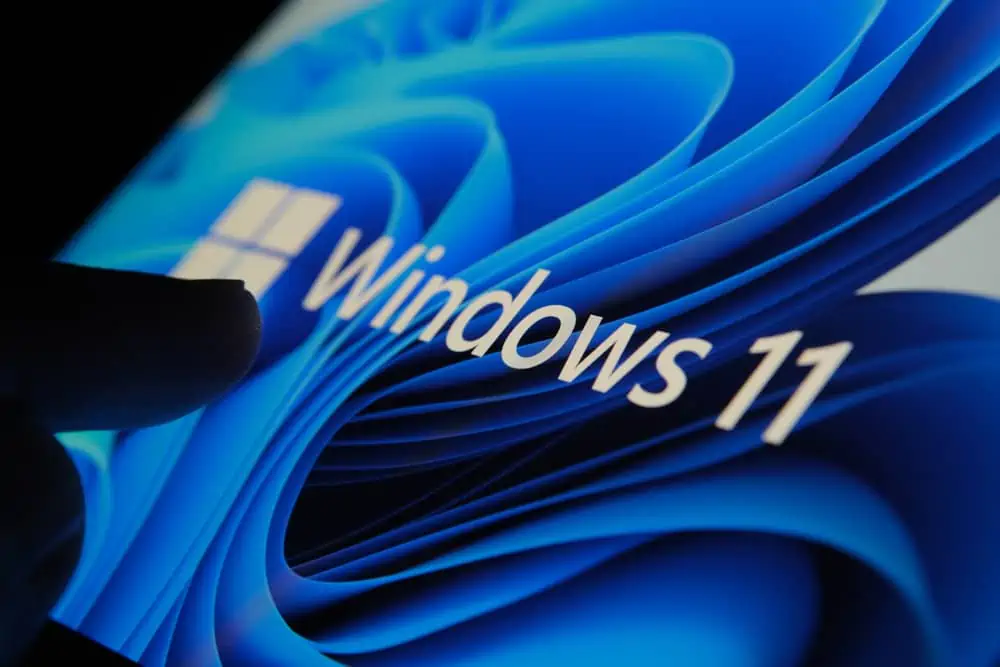With Windows 11 out, now is the time for businesses and individuals to start looking at Windows 10 end of life.
This Itechguide covers all you need to know about when Microsoft will pull the plug on Windows 10 support.
When is Windows 10 End of Life?
Before we get to the date, let’s first understand what we mean by “end of life”.
“End of life” talks about when Microsoft will stop officially supporting Windows 10. Also, at the end of its support lifecycle, Microsoft will stop releasing updates for Windows 10.
Later in this guide, I’ll examine the implications of running Windows 10 without updates from Microsoft.
Moving on, according to Microsoft, support for Windows 10 will end on 14 October 2025. This means that the Windows 10 end of life is 14 October 2025.
This applies to Windows 10 Home, Pro, Pro Education, and Pro for Workstation. After October 14th, 2025, you’ll no longer receive updates and patches for these editions of Windows 10.
“Modern Lifecycle Policy”: Implications for Your Business
Microsoft offers different “Support Lifecycle Policies”. One of these support policies is called “Modern Lifecycle Policy”
What is this important?
The simple answer is because Windows 10 Home and Pro support come under this policy. Furthermore, if you run any of the Windows 10 Home or Pro Editions, you need to know how you get support from Microsoft.
What is “Modern Lifecycle Policy”?
All Microsoft’s products that follow the “Modern Lifecycle Policy” are supported continuously. Here, the word “continuously” is used loosely. It doesn’t mean that the product is supported endless.
On the contrary, it means that as far as the product meets certain criteria, Microsoft will continue to offer support.
Generally, for products that fall under this support policy, and specifically for Windows 10 end of life, if a product meets the following criteria it will continue to be supported by Microsoft:
- Microsoft must currently offer support for the product or service.
- All copies of the product must be licensed.
- You must stay up to date regarding the servicing and system requirements published by Microsoft
The implications of these 3 conditions are:
- Based on the Windows 10 end of life, Microsoft will stop offering support for Windows 10 from 14th October 2025
- To continue to be eligible to receive updates and patches, all copies of Windows 10 in your organization must be licensed.
- Register to receive updates from Microsoft about any changes to Windows 10 support.
Change Notifications
In the last section, I mentioned that under the “Modern Support Lifecycle” offered by Microsoft, it is your responsibility to know about changes Microsoft might make to Windows 10.
Talking about changes, according to the details of this support lifecycle, Microsoft will notify customers of any changes that will require action at least 30 days before you need to take the action.
This means that if Microsoft makes any change that will significantly affect Windows 10, you will be notified to take action for at least 30 days before you need to.
If you manage an organization with hundreds or thousands of Windows 10 PCs, it pays to have a dedicated resource that manages Windows 10 updates and patches.
Implications of Using Windows 10 Beyond Its End of Life
If you’ve been reading this article from the beginning, you would have noted that at its end of life, Windows 10 will stop receiving updates.
The first and most significant implication of using Windows 10 beyond the end of life is the risk of vulnerability.
Like any other application, Microsoft releases updates for Windows 10 to enhance its performance. Moreover, updates may also fix bugs, vulnerabilities, and security issues.
These bugs and vulnerabilities may be minor. However, sometimes they may be major. In any case, major or minor, if you stop receiving updates for Windows 10, it will become prone to attacks.
Another implication of using Windows 10 beyond its end of life is that you will no longer get enhanced features. This is a big deal since receiving new features is what of the things that make using any software fun!
Apart from just the fun and excitement of new features, they may also improve your productivity.
Your Windows 11 Upgrade Options
Now that you know that your copy of Windows 10 will stop receiving support from October 14th, 2025, what do you do?
Great question.
The answer depends on whether you are an individual or an organization.
For individuals, if you have a valid Windows 10 license, you will be able to upgrade to Windows 11 for free. However, we strongly recommend that you upgrade after Microsoft has released a stable version of Windows 11.
With this in mind, you should upgrade as soon as Microsoft offers you the option to do so.
Here at www.itechguides.com, we are monitoring the progress of the development of Windows 11. We’ll publish the guide to upgrade to the stable version of Windows 11 once it becomes available.
In the meantime, we are part of the Windows Insider Program – offering Microsoft feedback about the new OS. So, when the stable version becomes available you’ll be the first to hear it from us!
Moving on, if you are an organization, your upgrade options to Windows 11 will depend on your organization’s licensing. However, we strongly recommend that you start testing Windows 11 as soon as the stable version becomes available.
If your Windows 10 users use specific applications, you may want to start testing those applications on Windows 11. In addition to testing, you should also start making plans on the best upgrade channel for your organization.
Microsoft offers a number of tools for large upgrade rollouts. If you already have a Configuration Manager, you should be able to perform an in-place upgrade to Windows 11 (the link is for Windows 10).
If you need help automating the upgrade of thousands of Windows 10 to Windows 11, we can help. You can email us at [email protected]
No matter what you do, it is extremely important to migrate all your Windows 10 PCs to Windows 11 before Windows 10 end of life which is 14 October 2025!
Windows 10 Versions and Their End of Life
I am ending this article with a list of all the feature updates Microsoft has released so far for Windows 10 – and their end of life.
This section is specifically for organizations that manage large Windows 10 upgrade rollouts. This will help you determine when Microsoft stops supporting a specific version of Windows 10.
The table below is a list of all Windows 10 features updates and their end of life:
| S/N | Windows 10 Version | Support Start Date | Support End Of Life |
|---|---|---|---|
| 1 | 21H1 | 18th May 2021 | 13th December 2022 |
| 2 | 20H2 | 20th October 2020 | 9th May 2023 |
| 3 | 2004 | 27th May 2020 | 14th December 2021 |
| 4 | 1909 | 12th November 2019 | 10th May 2022 |
| 5 | 1903 | 21st May 2019 | 8th December 2020 |
| 6 | 1809 | 13th November 2018 | 11th May 2021 |
| 7 | 1803 | 30th April 2018 | 11th May 2021 |
| 8 | 1709 | 17th October 2017 | 13th October 2020 |
| 9 | 1703 | 11th April 2017 | 8th October 2019 |
| 10 | 1607 | 2nd August 2016 | 9th April 2019 |
| 11 | 1507 | 29th July 2015 | 9th May 2017 |
| 12 | 1511 | 10th November 2015 | 10th October 2017 |
I hope you found this helpful? If you did, kindly spare 2 minutes to share your experience with our community at [discourse_topic_url].
Also, you may add a comment or ask questions about Windows 10 end of life. To share a comment, kindly use the “Leave a Comment” form found at the end of this page.
Alternatively, simply respond to the “Was this page helpful” question below and provide us with your feedback.
Finally, for more Windows articles, visit our Windows page. You may also be interested in our Windows 11 page.



